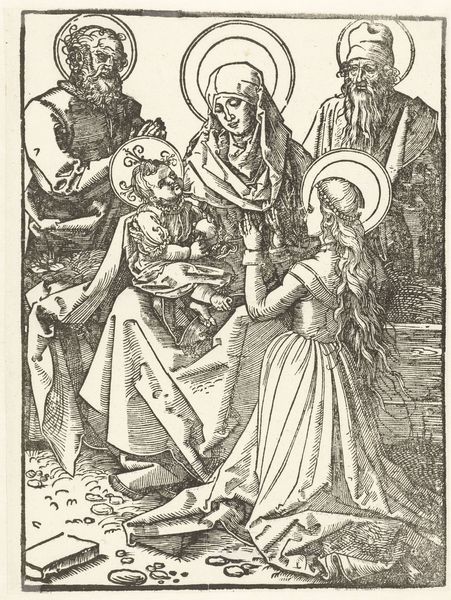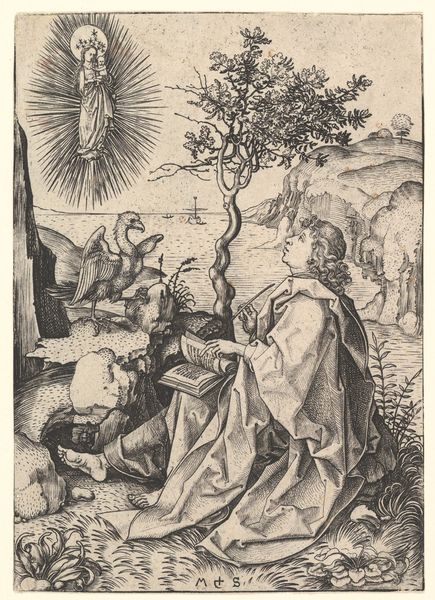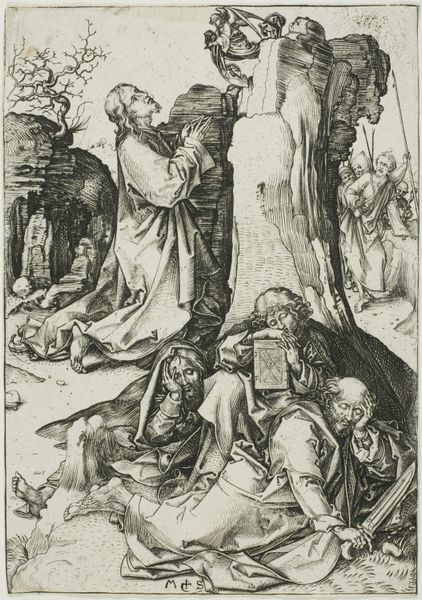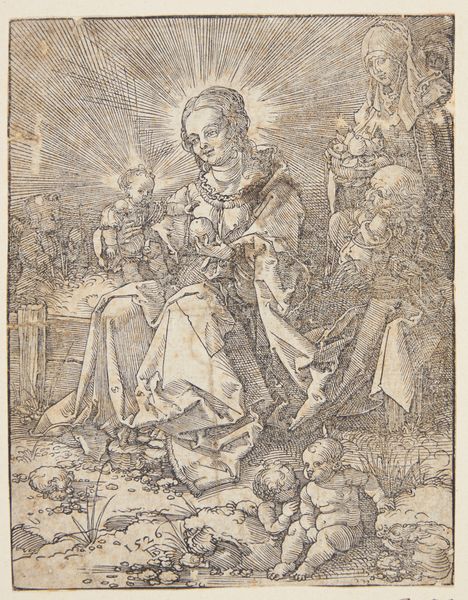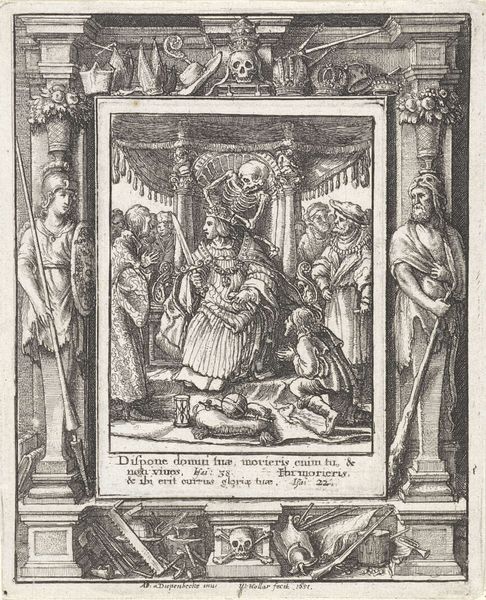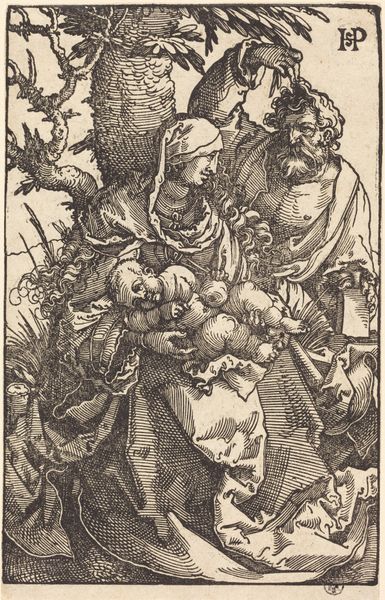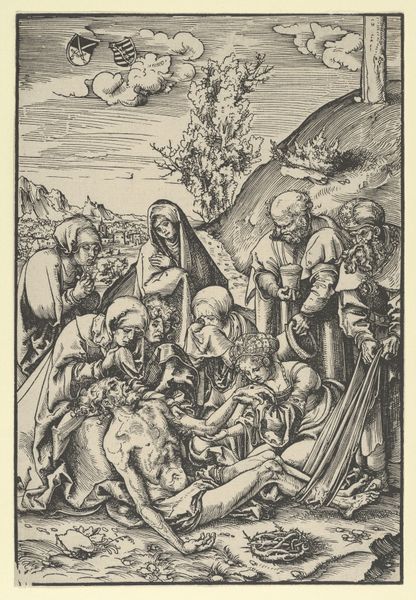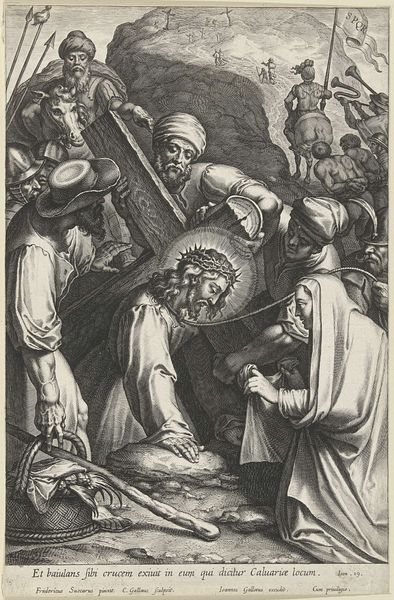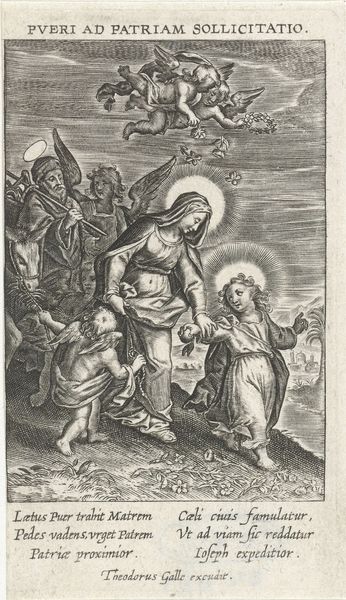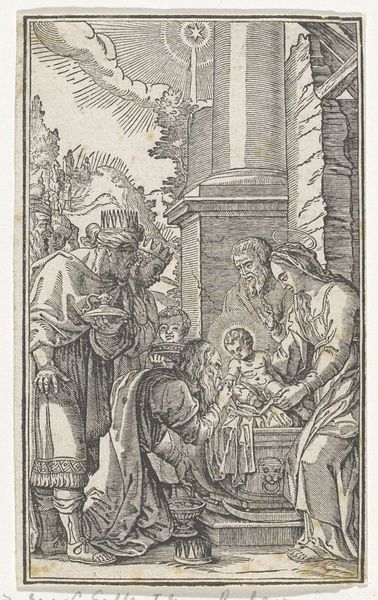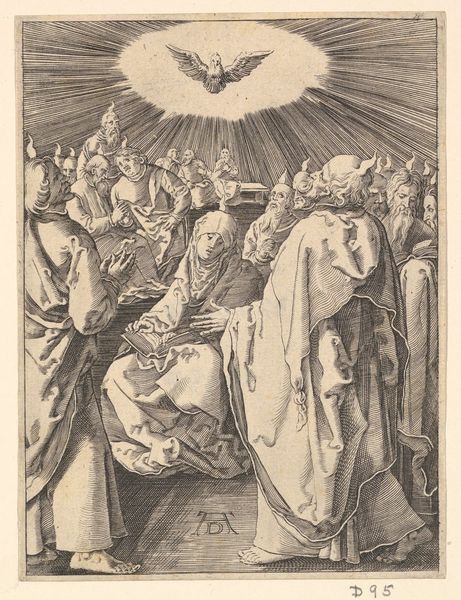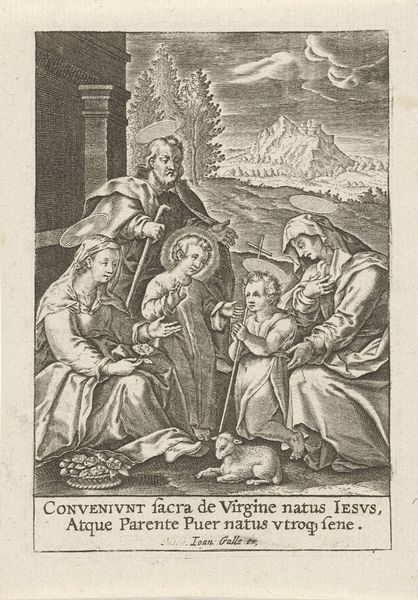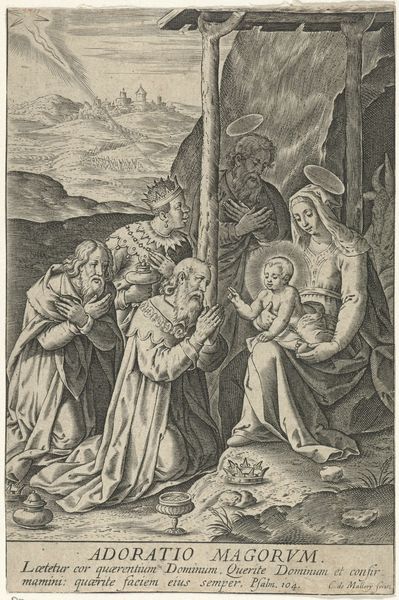
print, engraving
# print
#
figuration
#
history-painting
#
northern-renaissance
#
engraving
Dimensions: height 146 mm, width 112 mm
Copyright: Rijks Museum: Open Domain
Editor: Here we have Albrecht Durer’s 1526 engraving, "Maria met het Christuskind op een hekje," or "Mary with the Christ Child on a Railing," housed here at the Rijksmuseum. It's quite striking how much detail Durer achieves in this relatively small print. The contrasting light and shadow give it such depth. What draws your eye in this piece? Curator: Indeed, the formal qualities are quite compelling. The masterful use of line, for instance, creates not only form but also varying textures. Consider the radiant lines emanating from Mary's head, how they visually isolate and elevate her figure. Editor: That's a good point! I hadn’t really focused on those lines before. How would you interpret the overall composition? Curator: Observe how the composition is structured using a pyramidal arrangement. The figures of Mary, Christ, and the supporting figures are tightly arranged, and lend to a certain stability. Furthermore, the subtle shifts in hatching density create an interplay between light and dark that reinforces the volumes. The very materiality of the engraving technique contributes to the artwork's visual language. Editor: So, it’s the visual language, rather than say, the subject matter itself that speaks most profoundly to you. Curator: Precisely. Though subject is undeniably present, I find it most productive to decode artworks through an awareness of line, composition, light and shadow and structural principles, and how these all guide the beholder's vision. The content unfolds through its form. Editor: That gives me a fresh perspective! Thank you for elucidating Durer’s artistic language with such clarity. Curator: My pleasure. These formal elements are indeed essential to how meaning comes to light within the artwork itself.
Comments
No comments
Be the first to comment and join the conversation on the ultimate creative platform.
